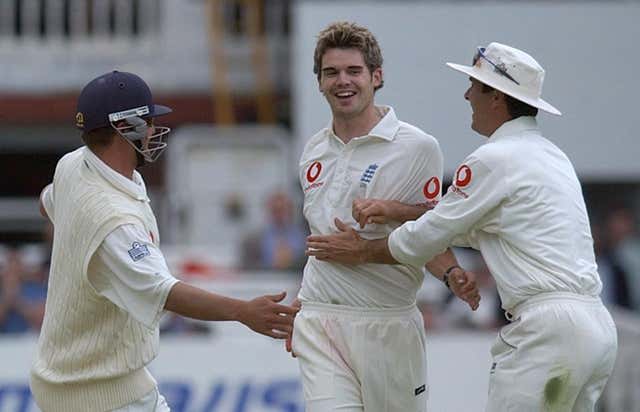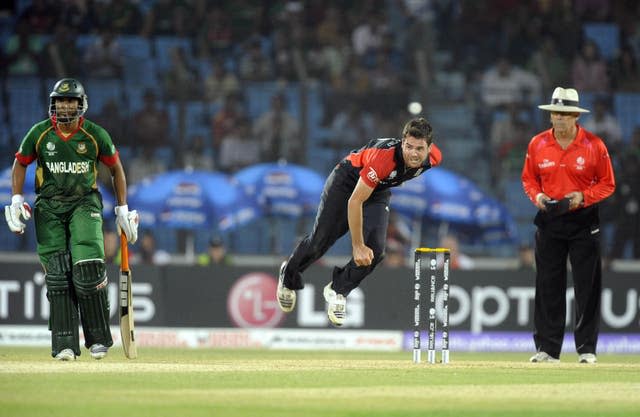James Anderson exits Test arena with achievements unmatched by any fast bowler
Age and injuries have been insufficient roadblocks as James Anderson set new stratospheric benchmarks, first for England then fast bowlers around the world.
But Father Time, presumably doubled over and still gasping for breath, has finally caught up with the evergreen swing king, who has announced the Lord’s Test against the West Indies this summer, in the month he turns 42, will be the final appearance of his international career.
And what a career it has been. Nearly 22 years of hard graft in which he sent down 39,877 deliveries and has been rewarded with 700 wickets, both a Test record for non-spinners. He is likely to be at the summit for a long time, especially with his closest challenger Stuart Broad also bowing out last year.

It is doubtful Anderson would be where he is without Broad, who owes just as much of his success to the Lancastrian. The pair are indelibly linked and their partnership fits comfortably alongside McGrath-Warne, Wasim-Waqar and Walsh-Ambrose as one of the best of all-time.
There are those who seek to downplay their achievements, that their records are gilded in home conditions with more modest successes overseas. But statistics can obscure the bigger picture with Anderson instrumental in England’s two greatest away victories in a generation.
Sir Alastair Cook hogged the limelight with his insatiable appetite for runs in the 2010-11 Ashes but the leading wicket-taker was Anderson, whose immaculate control and key breakthroughs led to him being described as “the major difference” by Mahendra Singh Dhoni when England beat India in 2012 in a series where all other quicks floundered.
Sir Ian Botham’s 383 wickets are long since in the rear view mirror and much like the great all-rounder’s fine wines, Anderson kept getting better with age.

Rewind to December 2002, the start of his life with England, and Anderson was a terrorising pace bowler who swung the ball round corners and possessed immaculate seam control. He made an impression in the 2003 World Cup before taking a five-for on Test debut against Zimbabwe later that year.
His career stalled over the next few years, partly because well-meaning coaches attempting to iron out kinks in his action in an effort to prevent him succumbing to a stress fracture in his back had the unintended consequence of inducing stress fractures in his back.
He filtered out the bad advice and after being in and out of the side, his and Broad’s inclusion in New Zealand in March 2008 marked a changing of the guard as Matthew Hoggard and Steve Harmison were ushered out.
The connection was not instantaneous and England had to bide their time, but they struck up a union that brought four Ashes series victories between 2009 and 2015 during a golden period in which they also climbed to the top of the Test rankings between 2011 and 2012.
As Anderson’s career has progressed, so too has his meticulous planning to his craft. As his speeds dropped, he focused on a metronomic line and length to constrain batters although he was still capable of producing the odd ‘magic ball’.

That was evidenced with his 500th Test scalp as he pegged back the middle stump of West Indies opener Kraigg Brathwaite almost seven years ago en route to career best figures of seven for 42 at Lord’s.
Afterwards, Anderson admitted to feeling “not quite teary but emotional” – a break from his more natural sullen and occasionally grumpy demeanour that was regularly commented upon by team-mates and supporters alike.
Apart from one heated confrontation with India spinner Ravindra Jadeja in 2014, that hostility was self-contained. Anderson, who is a more self-effacing and thoughtful character off the field, channelled his anger in more productive fashion.
He was part of the England side that reached the 2013 Champions Trophy final but his white-ball career ended two years later after the World Cup omnishambles. Although Anderson never actually retired, he was deemed surplus to requirements even though no other Englishman can better his 269 ODI wickets.

The decision elongated Anderson’s red-ball career. He went on to top the Test bowling rankings on a couple of occasions, breaching the 900-point barrier a few days after he passed 100 wickets at Lord’s in August 2018 – the first paceman to take a century at a single venue. A month later he surpassed Glenn McGrath’s 563 wickets to become Test cricket’s most successful fast bowler.
A chronic shoulder injury, which was a factor in great rival Dale Steyn’s retirement, has impacted his daily routine to such an extent that even just brushing his teeth can prove a burden.
Recurring calf complaints meant he missed almost all of the 2019 Ashes while a broken rib sidelined him after a stellar showing at Cape Town that winter but Anderson was determined to have one final crack at Australia.
A glorious exit was not forthcoming but he further enhanced his legacy in India last year by becoming the third player – and first fast bowler – to take 700 Test wickets.
He will get one more opportunity to add to that total when he makes his final Test appearance at Lord’s in July, but whatever happens against the West Indies, his status as one of England’s greats was assured long ago.

 Yahoo Sports
Yahoo Sports 